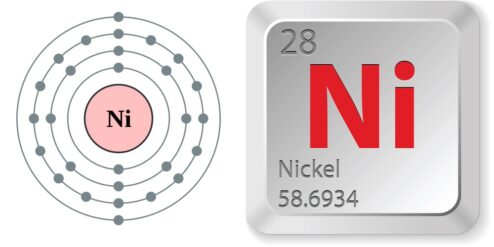Introduzione: Nickel allergy is a common cause of allergic contact dermatitis — an itchy rash that appears when your skin touches a usually harmless substance. Nickel allergy is often associated with earrings and other jewelry for body piercings. But nickel can be found in many everyday items — from coins to zippers, from cellphones to eyeglass frames. This article will guide you through understanding nickel allergy, its symptoms, diagnostic methods, treatment, and preventive measures.
Understanding Nickel Allergy: An Overview
Nickel allergy is a form of contact dermatitis caused by sensitivity to nickel. It is a common condition, affecting up to 15% of the population. The allergy develops after repeated or prolonged exposure to items containing nickel. Once a nickel allergy develops, it often lasts your whole life. However, if you avoid contact with nickel, you may reduce your symptoms. Nickel is a silver-colored metal found in various types of products, including jewelry, belts, eyeglasses, coins, and cellphones.
Symptoms of Nickel Allergy: What to Look For
The symptoms of nickel allergy can vary from mild to severe, and they can appear within a few hours to several days after exposure to nickel. The most common symptom is a rash or bumps on the skin. Other symptoms can include redness or changes in skin color, severe itching, blisters and sometimes draining fluid, and dry patches of skin that may resemble a burn. Symptoms usually start at the site of contact with nickel and can spread beyond the site of skin contact.
Diagnostic Methods for Nickel Allergy
If you suspect you have a nickel allergy, it’s important to seek medical advice. Your doctor will likely start with a physical examination and ask questions about your symptoms and lifestyle. They may also ask about your job, as certain occupations may expose you to nickel. If your doctor suspects a nickel allergy, they may recommend a skin patch test to confirm the diagnosis.
The Role of Skin Patch Testing in Nickel Allergy
A skin patch test is the most reliable method to diagnose a nickel allergy. During this test, small amounts of potential allergens, including nickel, are applied to your skin using patches. These patches remain on your skin for two days before they are removed by a healthcare provider. Your skin’s reaction is then observed to determine if you have an allergy. This test is safe and can be performed on adults and children.
Managing and Treating Nickel Allergy
The best strategy to manage a nickel allergy is to avoid all contact with the metal. However, this can be challenging as nickel is found in many everyday items. Over-the-counter treatments can help to alleviate symptoms, such as corticosteroid creams and nonsteroidal creams. In severe cases, your doctor may prescribe a stronger corticosteroid cream. Oral antihistamines can also help to reduce itching.
Preventive Measures: Avoiding Nickel Exposure
Preventing nickel allergy involves avoiding contact with items containing nickel. This can include choosing jewelry carefully, using a nickel alert test kit to check for nickel in items, and creating a barrier between your skin and items containing nickel, such as wearing clothing underneath a nickel belt buckle. It’s also important to check labels on clothing and household items, as ‘nickel-free’ does not always mean the item is completely free of nickel.
Conclusioni: Nickel allergy is a common condition that can cause uncomfortable symptoms. Understanding the condition, recognizing the symptoms, and knowing how to manage and prevent exposure to nickel can help those affected to lead a normal, symptom-free life. If you suspect you have a nickel allergy, it’s important to seek medical advice and get a proper diagnosis.
Per approfondire:
- American Academy of Dermatology Association: Nickel Allergy: This page provides comprehensive information about nickel allergy, including causes, symptoms, and treatment.
- Mayo Clinic: Nickel Allergy: A detailed overview of nickel allergy from a highly reputable health organization.
- National Eczema Association: Nickel Allergy: This page explains how nickel allergy is related to contact dermatitis and provides practical tips for avoiding nickel.
- American Contact Dermatitis Society: Nickel: This page provides a detailed look at nickel as an allergen and its impact on dermatitis.
- PubMed: Nickel Allergy: This scientific article provides an in-depth look at nickel allergy and its impact on public health.


